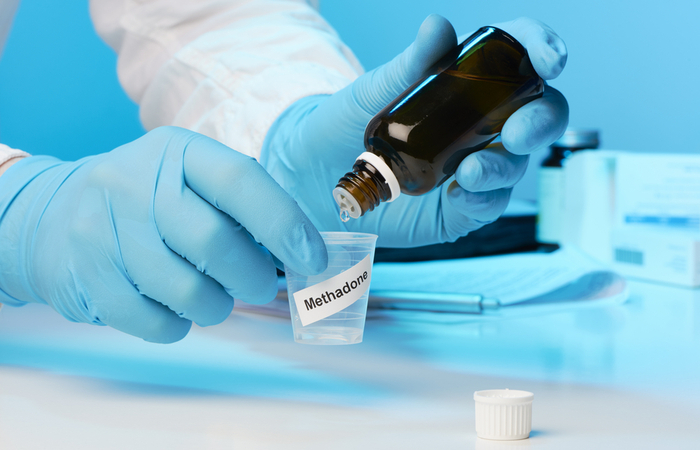Methadone Maintenance
Next Page ›
Methadone Maintenance
This paper addresses the management of pregnant women participating in a methadone maintenance program. It discusses the medical approach to the labor of a woman on a methadone maintenance program, what to anticipate at delivery and postpartum, and options for management of the infant who manifests symptoms of the neonatal abstinence syndrome.

Introduction
The standard therapy for narcotic addiction during pregnancy is methadone maintenance. (1) The advantages to this approach are multiple. Methadone gives little euphoric effect, but does ease the symptoms of physical dependency to the narcotic agent. Methadone has a longer duration of action than heroine or morphine, thus affording the addicted patient more time between doses, and reducing time spent in drug-seeking behavior. 2 Methadone maintenance programs typically offer educational and supportive programs that help the addicts to understand the dynamics of addiction and to regain control over their lives. 2, 3 Methadone maintenance also adds an element of safety to the pregnancy. It stabilizes maternal metabolic processes by keeping the autonomic nervous system in a relatively steady state. In doing so, the fetus is allowed to grow at an optimal rate, without experiencing intrauterine withdrawal symptoms or growth retardation.2 4 The goals of management for an infant exposed to methadone in pregnancy are to alleviate the signs and symptoms of methadone withdrawal and to maintain optimal growth and development of the infant. These infants are sometimes treated with either oral morphine or methadone to control symptoms of withdrawal. Women usually are not encouraged to breast-feed their infants while continuing to take methadone after delivery. The therapeutic benefits of allowing women to breast-feed their infants while on methadone have not been reported in the literature. Additionally, little information is available regarding the benefits of treating neonatal methadone withdrawal with either oral morphine or methadone. The purpose of this article is to describe our prenatal approach and clinical observations in a small group of mothers and their methadone-exposed infants who were managed and treated for neonatal abstinence syndrome using either oral morphine, methadone, and/or the mother's own breast milk containing methadone.
Methadone Management in Pregnancy
Pregnancy frequently motivates a woman to seek help in managing her narcotic drug addiction. This stems from a natural maternal concern for her child, and the realization that the use of toxic substances from unreliable sources might harm her fetus. Women who try to detoxify themselves often find that they become ill, and are endangering their fetus through large fluctuations in drug levels and the risk of intrauterine seizures. 5 As pregnancy progresses, there is an accelerated clearance of methadone from the maternal circulation due to a larger maternal blood volume, increased metabolism due to rising progestins and higher fetal tissue concentrations. Hence, increased doses are usually required as gestation nears term. 1 6 7 Divided daily doses may keep maternal plasma levels more stable, rendering some patients more comfortable during the latter part of pregnancy.1 8 Careful maternal management is of paramount importance if the mother is to be kept symptom-free and unlikely to seek other narcotic substances on her own. Consequently the fetus is less likely to suffer adverse effects from other noxious substances or from withdrawal symptoms. Preliminary data suggest enhanced fetal somatic growth and head circumference when the maternal dose is increased in the third trimester. 8 Maintaining stable maternal plasma levels is key to keeping both the mother and the fetus symptom free during the latter part of pregnancy, even if this means increasing the methadone dose during the third trimester of pregnancy.1, 9, 10 Additionally, fetal monitoring is required to determine fetal well being during methadone maintenance during pregnancy. Fetal heart rate monitoring may reveal a non-reactive non-stress test, since fetal responsiveness may be somewhat blunted by the methadone; therefore the complete fetal biophysical profile may give a more precise indication of fetal wellbeing.
